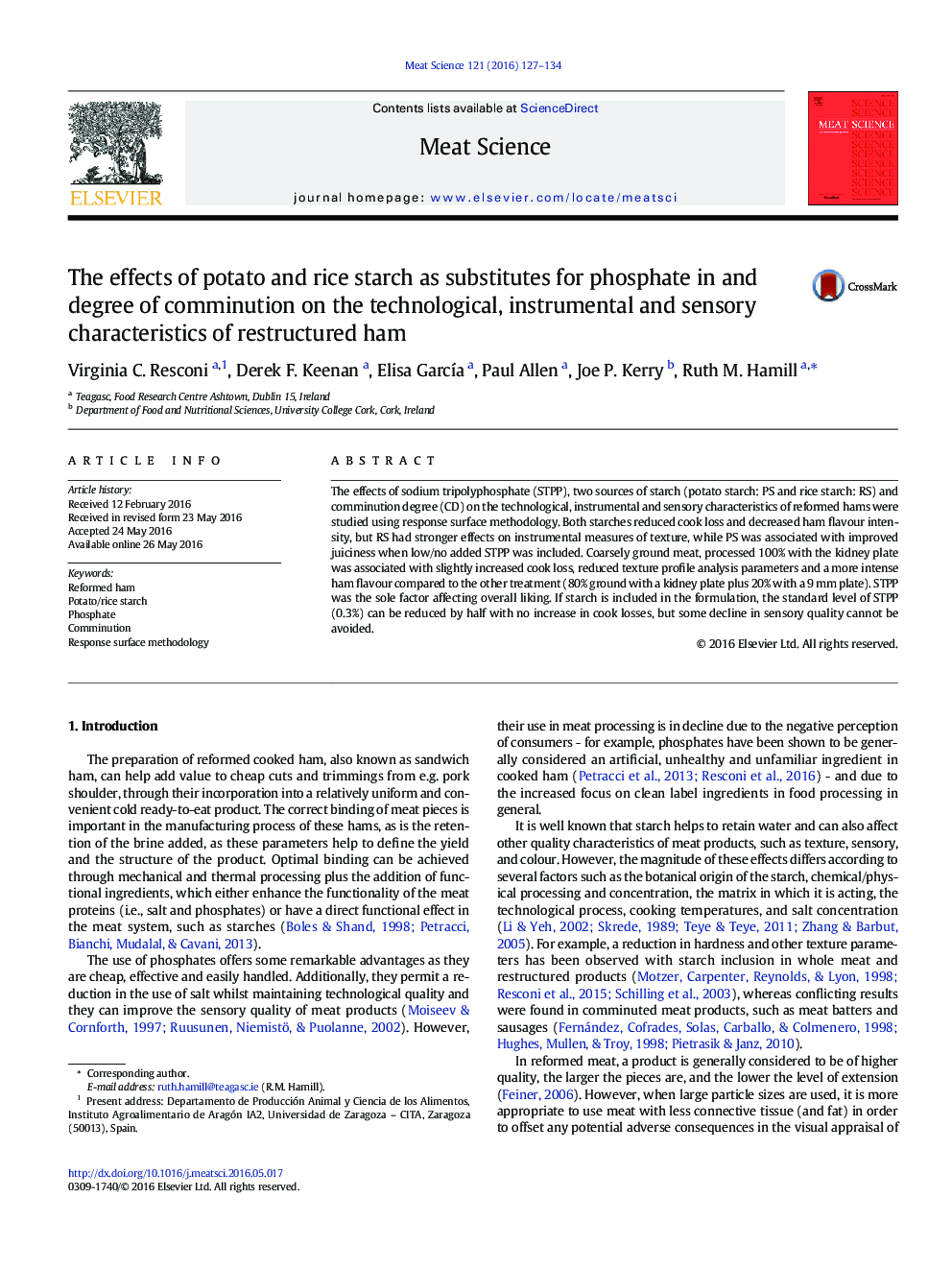| Article ID | Journal | Published Year | Pages | File Type |
|---|---|---|---|---|
| 5791060 | Meat Science | 2016 | 8 Pages |
â¢Experimental reformed hams with starches at varying comminution level were evaluated.â¢Potato and rice starch reduced cook loss and increased reformed ham flavour intensity.â¢Degree of comminution affected TPA, flavour and cook loss.â¢Interaction effects between comminution degree and rice starch were found for colour.â¢STPP was the sole factor affecting overall liking.
The effects of sodium tripolyphosphate (STPP), two sources of starch (potato starch: PS and rice starch: RS) and comminution degree (CD) on the technological, instrumental and sensory characteristics of reformed hams were studied using response surface methodology. Both starches reduced cook loss and decreased ham flavour intensity, but RS had stronger effects on instrumental measures of texture, while PS was associated with improved juiciness when low/no added STPP was included. Coarsely ground meat, processed 100% with the kidney plate was associated with slightly increased cook loss, reduced texture profile analysis parameters and a more intense ham flavour compared to the other treatment (80% ground with a kidney plate plus 20% with a 9Â mm plate). STPP was the sole factor affecting overall liking. If starch is included in the formulation, the standard level of STPP (0.3%) can be reduced by half with no increase in cook losses, but some decline in sensory quality cannot be avoided.
